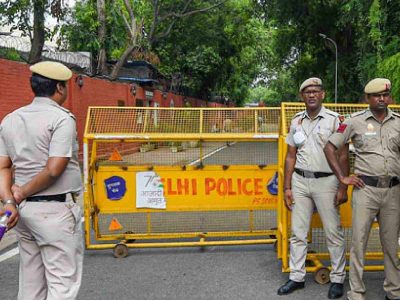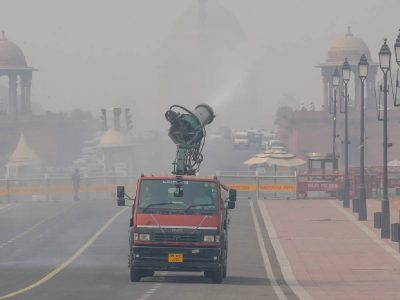India said on Sunday that retaliatory military action between May 7 and May 10 led to the deaths of an estimated 35 to 40 Pakistani Army personnel, as part of Operation Sindoor—a mission launched in response to the April 22 terrorist attack in Pahalgam that killed 26 civilians.
Officials emphasised that India’s actions were strictly aimed at dismantling terrorist infrastructure, in contrast to Pakistan’s alleged retaliation, which targeted civilian areas and military sites.
“The key difference between India and Pakistan is that we targeted terrorists, whereas the Pakistani response focused on our civilians and military infrastructure—a move that demands a response,” said Air Marshal AK Bharti. “In retaliation, we struck radar installations near Lahore and close to Gujranwala. Yet, we want to emphasise that escalation is not our goal. Our conflict is with terrorists, not with the Pakistani military establishment.”
Also read: Operation Sindoor | Executed assigned tasks with precision: IAF
Strikes on nine terror hubs
Lieutenant General Rajiv Ghai, India’s Director General of Military Operations (DGMO), said that the Pakistani Army had lost approximately 35 to 40 personnel due to artillery and small arms fire along the Line of Control (LoC).
General Ghai added that a series of recent assaults on Indian civilians and security forces, culminating in the Pahalgam attack, triggered Operation Sindoor, which targeted nine confirmed terror hubs. Over 100 terrorists were reportedly killed, including high-profile operatives such as Yusuf Azhar, Abdul Malik Rauf, and Mudasir Ahmed—individuals linked to the IC814 hijacking and the Pulwama bombing.
The Indian Air Force (IAF) and Navy provided support, with the IAF engaging terror camps and the Navy supplying precision-guided munitions. Many terror camps had already been evacuated in anticipation of Indian retaliation, but the operation struck key locations in Pakistan-occupied Jammu and Kashmir (PoJK) and Punjab province, including Muridke, a known Lashkar-e-Taiba base.
“This was a clear message against terrorism and a demonstration of India’s zero tolerance,” Ghai said.
Pakistani drone attacks and India’s calibrated military response
Indian officials accused Pakistan of retaliating not by targeting militants, but by violating the LoC and attacking civilian zones. On the night of May 8–9, Pakistani drones and aircraft attempted multiple incursions into Indian airspace, allegedly targeting military infrastructure.
“These attempts were largely unsuccessful,” said Ghai.
Air Marshal Bharti elaborated that from around 8 PM on May 8, Pakistani unmanned aerial systems and drones launched coordinated attacks on several IAF bases, including Jammu, Udhampur, Pathankot, Amritsar, Bathinda, Dalhousie, and Jaisalmer.
“These mass raids came in waves. Our air defence systems, including legacy platforms like Pechora and IAF SAMAR, successfully neutralised every incursion without any damage on the ground,” he said.
In response, India carried out precision strikes on high-value military targets across Pakistan’s western front.
“We hit air bases, command centres, and air defence systems. Targets included Chaklala, Rafiq, and Rahim Yar Khan. Follow-up strikes were conducted at Sargodha, Bhulari, and Jacobabad. We demonstrated that we can reach and neutralise critical systems at these installations,” Bharti said.
General Ghai added that land, air, and sea deployments were synchronised with electronic warfare and air defence assets to create an integrated response grid alongside the IAF.
Also read: Pak has violated bilateral understanding reached this afternoon: Govt sources
Ceasefire agreement and violations
On May 9 at 15:35 hours, Ghai said he had a conversation with his Pakistani counterpart, during which a ceasefire was proposed. A mutual agreement was reached to halt cross-border firing and aerial intrusions effective from 17:00 hours on May 10, with a follow-up discussion scheduled for May 12 at noon.
“Unfortunately, and perhaps predictably, the Pakistan Army breached the agreement within hours through renewed firing across the Line of Control and drone intrusions throughout the night and into the early morning. These violations were met with a firm and immediate response. Earlier today, we sent a formal hotline message to reiterate that any further violations will be met with strong retaliatory action. The Chief of Army Staff has granted full operational authority to our Army Commander to act decisively in the event of any further provocation,” Ghai said.
India: Operation Sindoor ongoing
The IAF confirmed earlier today that Operation Sindoor remains underway and has met its objectives with precision.
On May 10—just hours after the ceasefire agreement—fresh violations were reported, including Pakistani firing in Jammu and Kashmir’s Akhnoor sector and drone sightings in the Pir Panjal range.
Although US President Donald Trump initially disclosed the ceasefire as a US-brokered effort, Indian officials later clarified that the agreement resulted from direct bilateral talks. According to Foreign Secretary Vikram Misri, the DGMOs of both countries agreed to the ceasefire during a call at 3:35 PM IST, with implementation from 5 PM on the same day.





